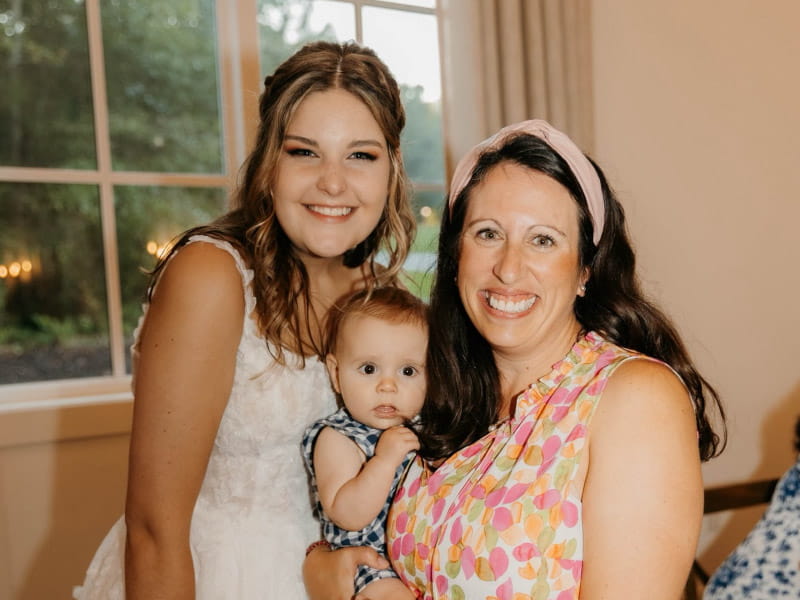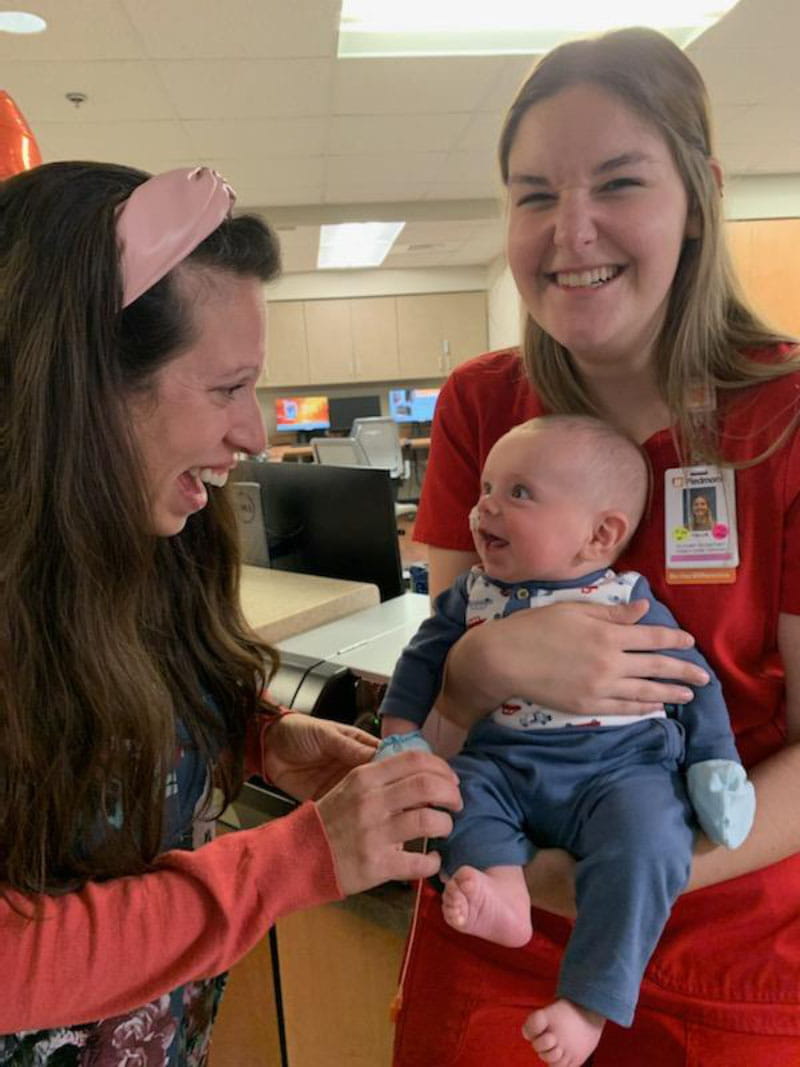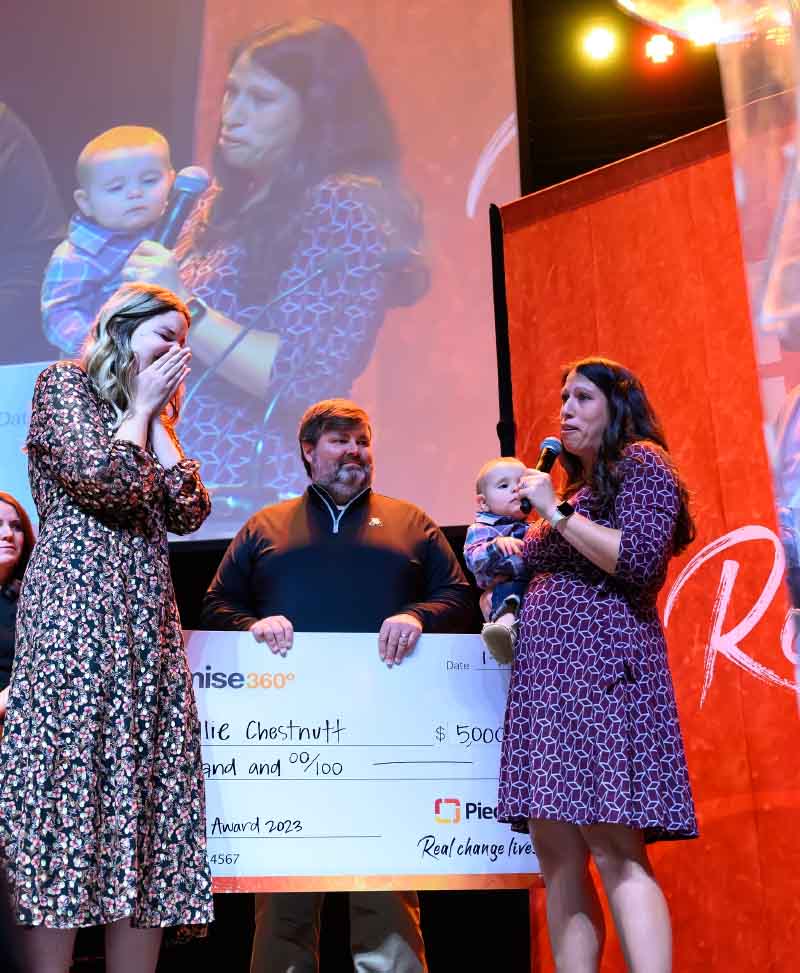A 4-hour-old stopped breathing. A patient care technician saved him.
By Deborah Lynn Blumberg, American Heart Association News

Sore and groggy from her cesarean section, Lorraine Stewart snuggled her 4-hour-old baby against her chest in her hospital bed as he nursed. Full and content, Court nestled in her arms, shut his eyes and went quiet. Lorraine lay back to rest.
Shortly after, patient care technician Hallie Allison popped into Lorraine's room. It was time to take her vital signs. Allison readied the blood pressure cuff and asked Lorraine if she wanted to sit in a chair for a while. Lorraine nodded, yes, and she shifted in bed.
Court didn't move. The two women stared down at him. He was still and his face gray.
Lorraine stroked her baby's head and rubbed his tiny shoulder. "Buddy, are you OK?"
Allison trained her eyes on his face. "No, he's not OK."
For Allison, a certified nursing assistant, it was a moment she'd trained for. For Lorraine and her husband, Will, the joyous occasion of welcoming a second child into the world after years of trying quickly slipped into a surreal panic.
Allison wanted practical experience as she planned for her next steps in health care. When a patient care technician position opened up on the mother-baby unit at Piedmont Athens hospital in Athens, Georgia, she applied right away and got it.
She quickly settled into her role of checking vital signs of women who'd just given birth, giving babies their first bath and removing IVs, catheters and staples.
One day four months into the job, Allison stepped into Room 3117. Lorraine's room.
After seeing Court's face and his limp, lifeless body, she jumped into action.
"My first instinct was to start CPR," Allison said.
She took Court from Lorraine and placed him in his bassinet. Within seconds, she called her charge nurse.
"Something's not right," Allison said. "I don't think he's breathing."
Allison started infant CPR, using two thumbs to press onto the middle of the baby's chest.
Meanwhile, her supervisor ran down the hallway to Lorraine's room. She grabbed Court and flipped him onto her forearm. She gave chest thrusts and back blows to dislodge anything that might be stuck in his throat.
Then she whisked him out of the room. "Call the NICU," she yelled to her colleagues. Allison and Will followed.
The room became eerily quiet. Lorraine sat up, her eyes staring wildly. She was achy and exhausted after the C-section. Now instead of focusing on healing, she was rigid and alert.
Her parents were on their way, driving to meet their new grandson. But they wouldn't arrive for another four hours.
Alone, she started to tremble.
Then Allison came back into the room. She'd left Court's care to the more highly trained staffers.
"How are you doing, mom?" she said.
Lorraine's face crumpled.
"Scoot over," Allison said, getting into the bed beside Lorraine and hugging her.
Both women cried.
"Talk to me about anything else besides what just happened," Lorraine told her.
Allison spoke about her fiancée – now, her husband. Lorraine shared stories about her family.
Meanwhile, a team of nurses and doctors continued CPR on Court. Finally, he took a breath. A test of his brain activity suggested he'd had a seizure, though results were inconclusive. Doctors put him on a low dose of anti-seizure medication anyway. He settled into the neonatal intensive care unit for further monitoring.
Allison went home at the end of her shift, but she couldn't stop thinking about the Stewarts. She called her colleagues to check on them throughout the night. For the next several weeks, she visited every day she was at work.
Lorraine and Will got to hold Court again four days later. He wasn't strong enough to eat on his own. He required a feeding tube for months. A month after birth, he went home.
Now, he's a happy and healthy 1-year-old. He started crawling later than most babies. Otherwise, he's hit every milestone. He recently stopped taking the anti-seizure medication. His pediatrician pegs his excellent outcome to how quickly he received high-quality CPR.
"Hallie didn't hesitate," Lorraine said. "She had the instincts to act right away."

The Stewarts and Allison text often, share photos and meet up for meals.
"The fact that she came back and checked on me shows just how great of a person she is," Lorraine said. "I think about her every time I look at Court."
When Allison married last fall, Lorraine and Court were there. At the ceremony, Allison and her friends from the hospital doted over him.
Inspired by her experience with the Stewarts, Allison recently applied to a midwifery and nurse practitioner program.
This year, Allison also won her hospital's Presidential Award. While on stage accepting the award, she received another surprise – the Stewarts showed up. She looked at Court and teared up.
"You really think, 'I'm never going to have to use CPR,'" Allison said. "Then it happens. And you don't think, you just do."

Stories From the Heart chronicles the inspiring journeys of heart disease and stroke survivors, caregivers and advocates.





